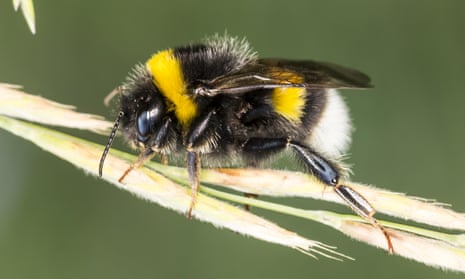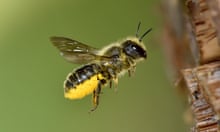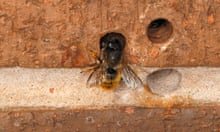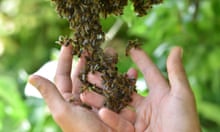A frantic buzz emanated from behind the curtain of ivy covering the fence, rising in pitch like an accelerating Vespa scooter. Parting the glossy leaves I discovered a buff-tailed bumblebee ensnared in an orb web.
Researchers have discovered that bees generate a positive electrostatic charge as they fly. This helps pollen grains stick to their bodies as they forage, but has the unfortunate side effect of increasing the likelihood that they will be caught in a web. Spider silk tends to be neutral or negatively charged, which causes an attractive interaction between insect and web.
The web shook as the bumblebee twisted and turned in a doomed attempt to be free. The more it struggled, the more entwined it became. Silken threads snagged on the pollen-gathering combs and brushes that bristled its hind legs and looped around its wings, tightly binding them to its body.
As uncomfortable as it can be to watch nature take its course I would never intervene and deliberately deprive a spider of a meal, but as the buzzing intensified it became obvious the web spinner had abandoned its abode.
I couldn’t leave the bumblebee to a slow and futile death. So I pulled out the tweezers from my Swiss Army knife and began the painstaking job of untangling the animal. I delicately unwound one strand at a time until I had released its legs and it was able to crawl into my palm. It made no attempt to sting me and while I’d like to think that it knew I was trying to help, the reality was that it was exhausted.
The bee’s appendages released, it summoned up its last reserve of energy to assist me in my efforts. Unfortunately, as it groomed off the sticky fibres they hooked on to its clawed feet and braided into a cord.
When I eventually managed to free the bee’s thorax and wings, I heard the pulsing vibration of its powerful flight muscles. It fought to take to the air, straining against the silk leash that was grasped in my tweezers. As it slipped this final tether I watched the bee spiral up into the sky like a lost helium balloon.
Follow Country diary on Twitter: @gdncountrydiary









Comments (…)
Sign in or create your Guardian account to join the discussion